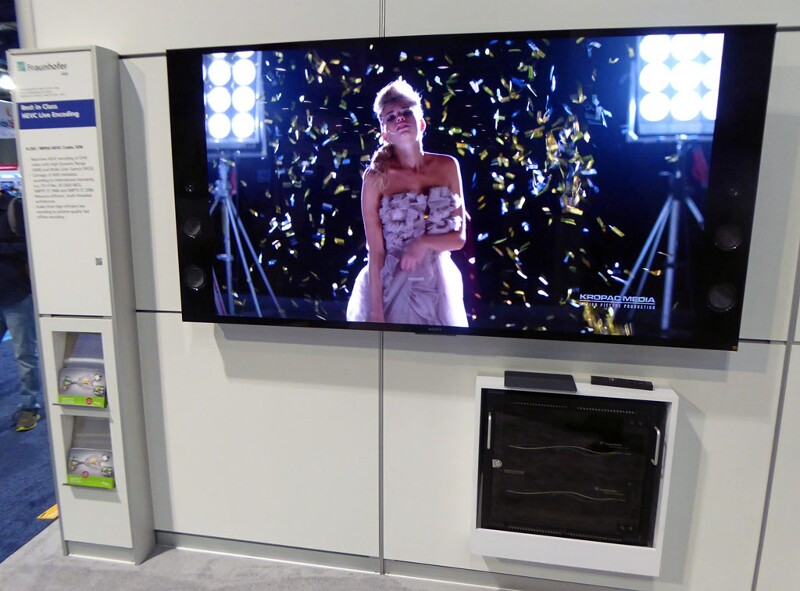One of the problems with market research is that you often wind up with conflicting data from two or more sources. Or, the data presents a “conclusion” that’s all too easy to “spin” to advance an argument or make a point.

Ever since the two adversaries in the blue laser optical disc format squared off with pistols at twenty paces in 2008 (and one lost), the clear trend of media consumption has favored streaming and digital downloads. Entire business models have collapsed as a result, including Hollywood Video and Blockbuster Video sales and rental stores. The last two Blockbuster outlets in Alaska are closing, leaving just one solitary brick-and-mortar operation in Oregon.
With Netflix now serving over 100 million subscribers around the world and Amazon rumored to be working on a smart TV for delivering Prime video, the tide hasn’t stopped rising. Purchases of digital downloads and streaming media surpassed physical media in dollar value way back in 2015 and the gap continues to widen as more customers take advantage of fast broadband, smarter DVRs, and improved codecs for reliable delivery of Full HD AND 4K video over networks.
My industry colleague Greg Tarr recently posted a story on the HD Guru Web site quoting NPD Group analyst Stephen Baker as saying that,
“…Ultra HD Blu-ray player sales increased by more than 150% over 2017 and the revenue is up 61%. The {Average Selling Price] ASP is $165 this year compared to $272 for the first 5 months of 2017.”
Baker further pointed out that that sales of UltraHD Blu-ray players in the United States increased 82% in May and revenue increased 13% with an ASP of $168. NPD estimates that 4K Ultra HD players represented about 15% of Blu-ray unit sales for the first five months of 2018.
Well, that certainly sounds like great news, doesn’t it? But some perspective is in order.
First off, all of these $168 players (which once cost north of $300 – $500 not long ago) also have built-in WiFi connections and can stream content from the likes of Netflix, Amazon, YouTube, and Hulu. And of course, they’re backward-compatible with standard Blu-ray, DVD, and CD audio formats.
Given the ridiculously low prices on Ultra HDTVs these days (such as 55″ models with HDR 10 support for as low as $450), many consumers may simply be in a major TV and home entertainment upgrade cycle. I bought my first 1080p TV in 2008, a 42-inch Panasonic plasma, for about $1200. And I’m now ready to upgrade from a 2012-vintage, 47-inch 1080p LCD model, to a 55-inch or 60-inch smart 4K set, which with HDR support will cost me about as much as that 42-inch Panasonic from 2008.
Will I pick up an Ultra HD player too? Hey, for $150, why not? And will I watch a lot of UHD Blu-ray discs on it? Probably not, since I will be able to stream Netflix and Prime video at 4K resolution. Will that streamed 4K content look as good as a physical disc playing out at more than 100 Mb/s? Maybe not, but on the other hand, I won’t have to buy or rent any more discs. And based on my experience the other night watching “The Catcher Was A Spy” from Amazon Prime, I will be quite happy with the result.
 Yes, you can buy a 4K TV at Shop Rite, available in the bread aisle. (Photo courtesy Norm Hurst)
Yes, you can buy a 4K TV at Shop Rite, available in the bread aisle. (Photo courtesy Norm Hurst)
As the saying goes, facts are stubborn things. The facts are; physical media sales have been in slow and steady decline for over a decade (and continue to decline) and Ultra HD BD disc sales constitute a small portion of overall media consumption. For that matter, so do sales of players: Research firm Futuresource predicts that global UHD Blu-ray player unit shipments should hit just 2.3 million, with more than 50% of those sales taking place in North America.
To put that in perspective, ABI Research forecasts that worldwide Ultra HD flat panel TV shipments will surpass 102 million in 2018, representing 44% of all WW flat panel TV shipments (about 232 million). So even with “record” sales growth, UltraHD Blu-ray player sales will only constitute about 2.2% of UltraHD TV sales, with the bulk of those player sales taking place in North America and Europe.
ABI also predicts that just shy of 200 million Ultra HDTVs will be sold in 2023 worldwide, with the majority taking place in China (which doesn’t use our Blu-ray format but instead relies on “China Blue,” the old HD-DVD standard). Coincidentally, Tarr’s article states that, “…market research predicts that blue laser optical disc player shipments will decrease from 72.1 million in 2017 to 68 million in 2023. Unit shipments for the global Blu-ray media market are expected to decrease from 595 million in 2017 to 516 million in 2023.”
That trend would seem to be at odds with TV purchases, according to an April press release from Futuresource. “We believe 4K UHD TV sets will ship over 100 million units this year, equivalent to two-thirds of the entire large screen market,” comments David Tett, Market Analyst at Futuresource Consulting. “Consumers increasingly want larger screens, and this is playing nicely into the 4K UHD proposition. HDR is expected to be present in 60% of 4K UHD sets this year.”
Digesting all of this data reveals that (a) 4K TV sales continue grow to worldwide (which is also being driven by a changeover from Full HD to 4K TV fab production, but that’s another story), (b) 4K TV sales will constitute an ever-larger percentage of overall TV sales by 2023 – if not close to 90%, (c) more and more consumers are streaming and downloading digital video than purchasing optical discs, (d) even with strong sales through the first six months of 2018, Ultra HD Blu-ray players are selling at a rate of just two for every 100 Ultra HDTVs purchased, and (e) overall sales of Blu-ray players of all kinds are in steady decline.
I fully expect to hear all of the arguments for UHD Blu-ray, picture quality being one of them. But if I can stream UHD content with HDR at acceptable quality levels, why do I need to buy discs? I’ll have access to an enormous cloud library and I’ll be more environmentally conscious, too. Besides, I rarely watch a movie more than once (look at the piles of old DVDs people try to get rid of at garage sales or foist on libraries). There’s plenty of good content available from video-on-demand.
 Ultra HD video content with HDR @ 16 Mb/s that looks as good as UHD Blu-ray? Yep, Fraunhofer IHS showed it at NAB 2016. And UHD BD supporters neglect to consider all of the continual advancements being made with codecs. A couple of years ago, Fraunhofer showed absolutely stunning Ultra HD video with dynamic HDR on a 65-inch UHDTV, encoded with HEVC H.265 at an average bit rate of 16 Mb/s – 15% of the peak streaming rate for Ultra HD Blu-ray – and they were encoding tricky stuff like confetti, wind-whipped waves, and moving objects with plenty of changing specular highlights. All heavy lifting.
Ultra HD video content with HDR @ 16 Mb/s that looks as good as UHD Blu-ray? Yep, Fraunhofer IHS showed it at NAB 2016. And UHD BD supporters neglect to consider all of the continual advancements being made with codecs. A couple of years ago, Fraunhofer showed absolutely stunning Ultra HD video with dynamic HDR on a 65-inch UHDTV, encoded with HEVC H.265 at an average bit rate of 16 Mb/s – 15% of the peak streaming rate for Ultra HD Blu-ray – and they were encoding tricky stuff like confetti, wind-whipped waves, and moving objects with plenty of changing specular highlights. All heavy lifting.
Granted, it took two computers to do the software encoding and decoding. But those two computers can easily be reduced to a set of chips with firmware and a powerful CPU and installed inside my next TV.
So what would I need an optical disc player for?
Analyst Comment
I bought an UltraHD BD player a year or so ago, for testing some UltraHD displays (my own TV remains just FullHD, but a Panasonic PDP that still looks good to me!). Ironically, the main use I have for it is to watch Netflix or Amazon Prime as my ‘smart TV’ is actually quite a stupid TV! (BR)
This article originally appeared on Pete’s HDTVExpert.com blog site and is reproduced with permission and thanks.

